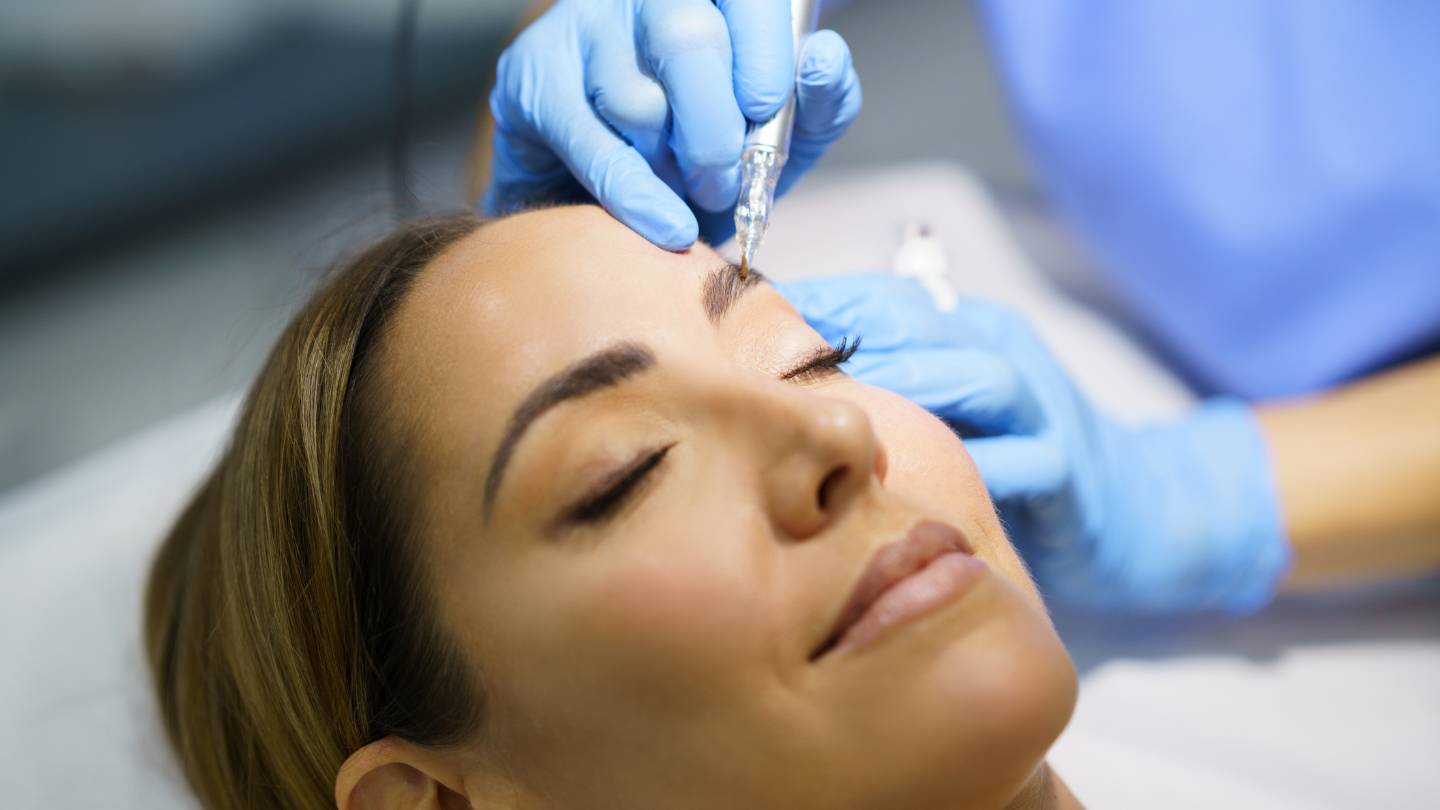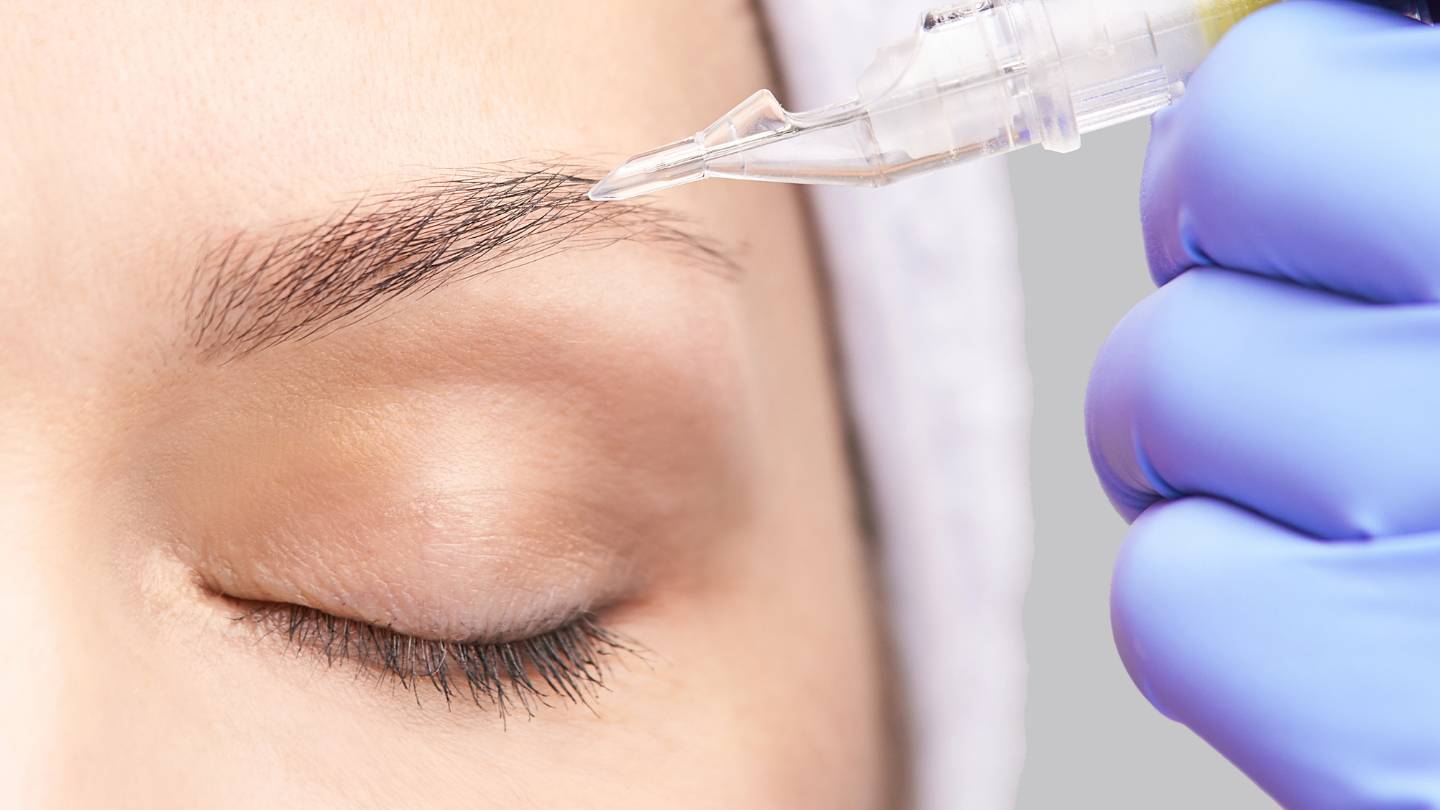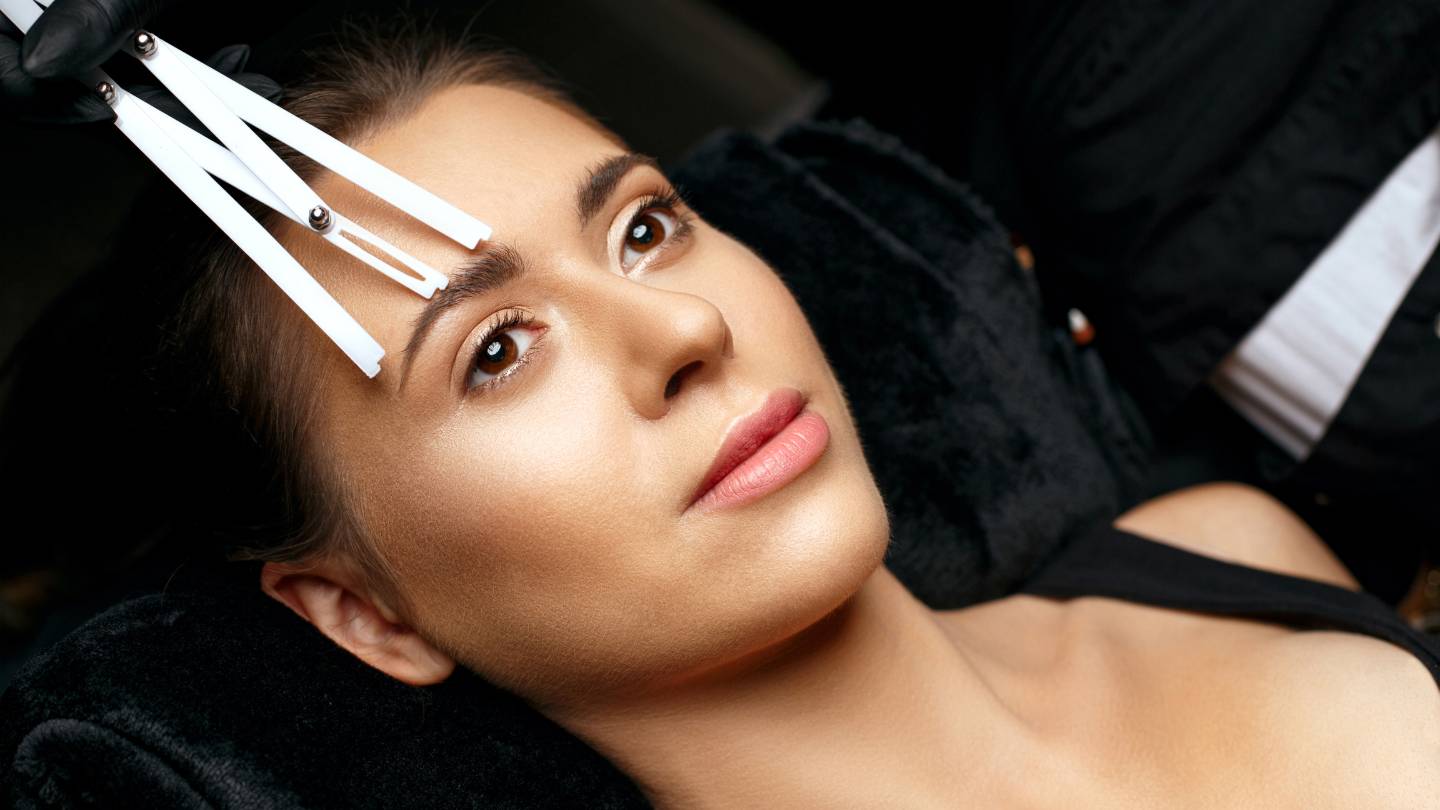Problems with eyebrow tattoos are a very uncommon occurrence, even though eyebrow tattoos and permanent cosmetics are both fascinating new approaches to achieving a more confident appearance. Using them will save you money, improve your look, and free up your time. There is a possibility of complications arising from the treatment, just like any other intrusive cosmetic option. In all fairness, many of these issues are associated with regular tattooing. The majority of the time, it is a very uncommon event.
On the other hand, as is the case with practically anything, the more knowledge you have as a client, the better you can safeguard yourself and steer clear of any problems. This piece aims to bring potential issues that may be permanent while using cosmetics to your attention. This will assist you in making well-informed selections tailored to your specific requirements.
What Could Go Wrong With A Tattooed Eyebrow?
Situations in which a customer's eyebrows are tattooed incorrectly often occur when the client does not select an eyebrow tattoo artist who is qualified, licenced, and experienced; however, there are other potential causes. The following are some examples of potential outcomes that might occur:
Your Eyebrow Tattoo Is Terribly Done
Ultimately, you end with eyebrows that differ from the shape or colour you wanted (or both) and do not look well on your face. You can have a crooked brow and be in a terrible situation. In most cases, this occurs because the artist's abilities are fundamentally inadequate. The artist may need to improve in mapping, outlining, or tattooing. At times, it is because the artist and the customer need to communicate better with one another.
What To Do:
- Determining the extent of the damage is the first step. You may suffer from brow shock and need some time to adjust to your new brows if you like the shape and colour but feel they don't complement your face. After the healing time ends, you should expect them to diminish in size and disappear.
- It is possible to fade them at home with retinol or hydrogen peroxide paste if they remain too dark after healing but have a decent form.
- You can use cosmetics to cover up any minor imperfections until you can schedule a touch-up. You'll want to touch up six to eight weeks following the first treatment. Unfortunately, you must avoid wearing makeup for at least two weeks following the procedure to prevent infection of the open wounds in your brows.
- During the first two days following the procedure, you may do an emergency removal using saline if your tattooed eyebrows turn out badly and you think there's no way to salvage them. In any other case, you'll have to let them fully heal before beginning a removal using glycolic acid, saline, or a laser.
Your Inked Eyebrows Went Bad Because You Neglected The Aftercare
After any brow treatment—microblading, nano brows, powder brows, etc.—you'll need to follow a regimen of maintenance recommendations, most of which are rather stringent during the first two weeks. Still, it's not hard to follow along.
Do not risk infection, pigment loss, and a botched tattoo of the eyebrows by disobeying your artist's instructions. For this reason, it is essential that you keep your eyebrows clean, refrain from swimming or saunas, use the recommended ointment as directed, and, most importantly, refrain from picking at the scabs.
What Could Happen If The Aftercare Is Not Done Correctly?
You have the power to alter pigment retention and ruin everything. Additionally, picking at the scabs might cause lasting scars. If you want to know what to do, contact the artist. They can address minor damage during the touch-up service.
When The Scabbing Stopped, All Of The Pigment Was Removed
Scratching, which often begins three to five days following treatment, is the most uncomfortable part. Scabs can stay on your skin for up to a week before peeling off. Your eyebrows will appear noticeably lighter after the peeling process is complete. In extreme cases, they may seem completely pigment-free, leading some to believe their tattooed eyebrows have mistakenly gone wrong.
In reality, cosmetic tattoos are more semi-permanent than permanent tattoos tattoos. The reason is that inks used for several years (1-3) would inevitably fade with time due to exposure to water, sunlight, aging, and other natural processes.
This can be problematic in the eyes of some as it necessitates a planned follow-up in a few years. To restore the eyebrows to their pre-treatment condition, these "touch-ups" darken, shape, and fill them.
Solution:
Here are some tips to aid in delaying the fading process.
- Use sunscreen whenever you spend the day outside (SPF 45 or above).
- Put on shades big enough to hide your tattooed eyebrows without making you look foolish.
- To keep your flawless eyebrows moisturised, use lotion in the morning or right after washing your face.
- The areas covered by permanent makeup should never be scrubbed or exfoliated.
- Apply petroleum jelly on your brows before entering any water (lake, spa, or pool).
You Got An Infection
There is always a chance of infection when the skin is opened, even though having an eyebrow tattoo these days is a rather safe technique. Assuming the artists employed non-sterile instruments, it might occur during therapy. That is why, before scheduling a treatment, you should do extensive research on the artist.
Infections And Equipment
Infection is a more significant (albeit improbable) worry regarding eyebrow tattoos. In general, tattoos are associated with a variety of known health risks. It is normal and anticipated to have minor inflammation and mild discomfort.
Furthermore, there is evidence of several other problems, including granulomas, keloids, keratoacanthomas, allergic responses, mycoses, and immune-mediated disorders like psoriasis, lupus, etc.
More dangerous infectious illnesses and infections, including syphilis, HIV, chancroid, hepatitis, and tetanus, can spread in unsanitary tattooing environments. The solution is to pick a facility that is controlled by the state. Also, check that the tattooing tools and needles are clean and labelled as "single use." Before any invasive surgery, it is crucial to ensure cleanliness.
Infections And Ink
Not only may unclean tools spread germs, but ink itself can do the same. Sometimes, this is hard to see. Nevertheless, microorganisms can be present in tattoo ink, even if artists adhere to all necessary hygiene protocols. This is still possible regardless of whether it is factory-sealed or not. While cases of this Mycobacterium infection are uncommon, patients may need to undergo lengthy courses of antibiotics to recover fully.
The process of diluting the pigment is another factor to think about. The usage of Mycobacterium haemophilum-infected tap water by an expert led to a well-documented epidemic of illness. They had several customers who had problems and needed major surgery to remove their parotid glands and eyebrows. The expert has to recognise the pigments as colour additives (to the ink).
Allergy Reactions With Dye And Ink
Due to the permanent nature of tattoo inks and dyes, any side effects, such as swelling, soreness, or itching, maybe a continual source of discomfort and bother. Titanium dioxide (TiO2) is a popular colouring element that can cause skin responses when exposed to specific light or UV rays. It is used to generate colours like red and black.
Due to their growing popularity, experts have started to do more studies on the safety of pigments and colours. Once again, the good news is that pigment and dye allergies are quite rare.
Problems With Removing Eyebrow Tattoos
Many people decide to get their eyebrow tattoos erased for various reasons. The results have left some people dissatisfied. Some people may be experiencing health problems, while others may feel they no longer fit into their lifestyle. Tattoo removal, for whatever cause, is a challenging and problematic process in and of itself.
Laser resurfacing, dermabrasion, chemical exfoliation, and intrusive surgery are some removal methods. Intense discomfort and more sessions may be required to finish the removal process. Additional risks include scarring, infections, deformities, and a heftier price tag than permanent cosmetics application. One piece of good news: removing an eyebrow tattoo is the easiest.
Some Reasons Why Brow Tattoos Go Wrong
Artist Without Training
To achieve stunning results, your permanent makeup artist needs extensive training. A skilled artist with at least two or three years of experience should be able to meet your expectations.
Artist Was Not Able To Draw According To Face
A professional artist is only complete with first sketching the client's unique brow form. Worst case scenario: the artist begins work on the client's eyebrows without first sketching the permanent contours that would fit their face.
Choosing an Artist Depending On Price
If a brow tattoo process is inexpensive, the artist could be better and charge a fair or premium rate. Cheap artists often need to be more experienced and just starting. Aspiring artists are advised to set prices cheaply to gain as much experience as possible. It is advisable to steer clear of these artists and choose one with at least a year or two of expertise and an average price for eyebrow tattoos.
Did Not See The Artist's Previous Work
The most common cause of botched eyebrow tattoos is clients who only review their artist's portfolio after their appointment. You should check out the artist's portfolio and read reviews of their past work before making an appointment.
Having An Uneasy Feeling When You See The Artist
When you first meet your artist, start a conversation and establish a rapport. It will put you at ease throughout your appointment, allowing you to freely discuss topics like eyebrow form, pigment colour, and more. However, you can feel awkward asking questions regarding your treatment if you are unhappy or uncomfortable with your artist.
What You Must Understand Before Fixing A Bad Eyebrow Tattoo
Compared to ladies with clean skin, those with thicker lips, eyeliner, and new eyebrows will appear fuller following the procedure. This is due to two factors.
- Beneath your skin, you already have pigment. We may not always approve of its hue, but it adds saturation to news reports.
- Overlapping darker inks and working less ethereally and thicker is necessary if your existing tattoo is dark or saturated. If you do, it will be useful.
Before Renovating An Old Eyebrow Tattoo, Professionals Should Warn You About The Expected Effects
- Pigment tones overlap so that you won't have many options. The master can tell you which coltan is best for covering up old tattoos. And there will probably be just one, maybe two, choices. The cosmetic tattoo artist has two options: "match" the new tattoo's colour to your previous one as closely as possible or pick a deeper shade to cover your old one, completely recolouring it.
- You should never use a lighter shade to cover up an older eyebrow tattoo; instead, you should use a darker shade.
- For a long time, thin eyebrow threads weren't in style. The most common method for improving unattractive eyebrow forms is to widen them. Get ready to adjust to fuller eyebrows for a little; that's the best course of action.
- Once the new tattoo has healed over the old one, you will likely require a touch-up. Light pudding is not an easy way to hide an old permanent.
- After a year or so of wearing your new permanent, the previous pigment may begin to fade, so be prepared for that. There needs to be more depth in today's tattooing methods. The result is a faster rate of pigment vanishing. On the other hand, the ancient, deeply embedded stain is still there.
As you can see, we have thoroughly examined the specifics of the tattoo repair process up above. Replacing an existing permanent mark with a new one is not feasible when correcting is involved in 80% of the circumstances. What follows is an essay detailing the telltale symptoms of an old tattoo that make its improvement impossible.
Conclusion
Problems with eyebrow tattoos can arise from a number of sources, such as choosing an inexperienced artist, failing to properly care for the tattoo afterwards, not removing scabs, or contracting an infection. Some typical reasons include crooked brows caused by improper aftercare, scab removal not being done properly, or premature touch-ups.
To address these concerns, it's crucial to assess the damage, adhere to maintenance instructions, refrain from wearing cosmetics for a minimum of two weeks, and contemplate emergency removal if needed. Damage to pigment retention and subsequent scarring might result from improper treatment.
The brows may look lighter and pigment-free if you scratch them three to five days following treatment. Because tattoo inks fade with time from being exposed to water, sunlight, age, and other natural processes, cosmetic tattoos are considered semi-permanent rather than permanent. Use sunscreen, cover up your tattooed eyebrows with shades, apply petroleum jelly before getting in the water, avoid regions that have been scraped or exfoliated, and keep your eyebrows moisturised with lotion to postpone the fading process.
Because of the potential for infection during treatment, it is essential to do one's homework on the artist before making an appointment to avoid any unpleasant surprises. If customers are aware of these risks, they can make educated decisions regarding their eyebrow tattoos that will help them feel good about themselves and how they look.
Infections, ink contamination, and allergies are just a few of the health hazards that can be associated with eyebrow tattoos. Gravulomas, keloids, keratoacanthomas, allergic reactions, mycoses, and immune-mediated illnesses are some of the possible infections that might develop in unclean tattooing spaces. Even when artists follow all necessary hygiene procedures, the ink may still be contaminated due to the use of unclean instruments and needles.
The long-lasting character of tattoo inks and colours makes them a popular trigger for allergic responses. One common colouring ingredient, titanium dioxide (TiO2), can trigger skin responses when exposed to certain light or ultraviolet radiation. Colour and pigment allergies, albeit uncommon, do occur.
Attempts to remove eyebrow tattoos using procedures like chemical exfoliation, laser resurfacing, dermabrasion, or intrusive surgery can be difficult and risky. Many things can go wrong with eyebrow tattoos. It's possible the artist is untrained, they don't pay attention to proportions when drawing, you choose them because they're cheap, you don't look at their portfolio, or you just feel uneasy around them.
In order to correct a poorly executed eyebrow tattoo, one must be knowledgeable about the typical outcomes of different pigment tones, the necessity of a darker shade, and the necessity of touch-ups one year or later. When correcting is involved in 80% of the cases, it is not practicable to replace an existing permanent mark with a new one. Avoiding these problems requires getting to know the artist and staying away from issues that aren't absolutely necessary.
Content Summary
- Eyebrow tattoos and permanent cosmetics offer a new way to enhance appearance and confidence.
- Despite their popularity, complications with eyebrow tattoos are rare but can occur.
- Common issues stem from choosing an unqualified or inexperienced tattoo artist.
- Bad outcomes can result in undesired shapes or colours, leaving clients unhappy.
- Correcting a poorly done tattoo may involve fading at home, makeup cover-up, or professional removal.
- Neglecting aftercare can lead to infections, pigment loss, or a botched tattoo.
- Scabbing without pigment retention is a common concern but is usually part of the healing process.
- Protective measures can slow the fading of tattooed eyebrows, such as using sunscreen and avoiding exfoliation.
- Infections can arise from non-sterile equipment or contaminated ink, emphasising the need to choose reputable artists.
- Unsanitary tattooing environments can spread serious infections, highlighting the importance of regulated facilities.
- Tattoo ink can sometimes be contaminated, leading to rare but serious infections requiring antibiotic treatment.
- Allergic reactions to tattoo pigments or dyes are rare but can cause ongoing discomfort.
- Tattoo removal is complex and can involve pain, scarring, and significant expense.
- Eyebrow tattoos can go wrong due to untrained artists, inadequate pre-tattoo planning, and choosing artists based on low prices.
- Failure to view an artist's previous work and feeling uncomfortable with the artist can also lead to unsatisfactory results.
- Before fixing a bad eyebrow tattoo, it's crucial to understand the limitations imposed by existing pigments and desired outcomes.
- Pigment colour options may be limited when covering old tattoos, often requiring a darker shade for effective coverage.
- Adjusting to fuller eyebrows may be necessary when correcting unattractive tattoo shapes.
- Touch-ups are often required after the new tattoo heals over the old one.
- Previous pigments may begin to fade, revealing the old tattoo beneath the new one.
- The improvement of old tattoos is not always feasible, with correction often involving significant adjustments.
- Complications from eyebrow tattoos can be minimised by selecting a skilled and experienced artist.
- Proper aftercare is crucial for preventing infections and ensuring the best possible healing and appearance.
- Addressing bad outcomes may involve several strategies, including fading, cover-ups, or professional removal.
- Awareness and informed decision-making can help clients avoid problems with eyebrow tattoos.
- Understanding the potential for complications and how to address them can enhance satisfaction with the results.
- Researching artists and facilities, viewing previous work, and establishing good communication is key to successful outcomes.
- Knowing the limitations and challenges of correcting bad eyebrow tattoos can help set realistic expectations.
- Choosing the right colour and technique for the desired result is essential for a satisfactory outcome.
- Following aftercare instructions diligently is vital for the longevity and appearance of the tattoo.
- Awareness of infection risks and how to minimise them is crucial for a safe and successful eyebrow tattoo experience.
- Considering the semi-permanent nature of some eyebrow tattoo techniques can influence decision-making.
- Understanding that no two eyebrows will look exactly alike can help manage expectations.
- Recognising that discomfort is part of the tattooing process and preparing accordingly can improve the experience.
- Knowing that the appearance of tattooed eyebrows can change significantly during the healing process is important.
- Being aware that corrections are possible if the initial result is unsatisfactory provides reassurance.
- The potential for scarring emphasises the importance of choosing a skilled artist and following aftercare instructions.
- The possibility of pigment colour changes over time highlights the need for careful selection of pigment and technique.
- The need for touch-ups or corrections underscores the importance of maintaining a relationship with the tattoo artist.
- Understanding that eyebrow tattoos can enhance appearance and confidence when done correctly can motivate careful planning.
- Being informed about the risks and how to mitigate them can ensure a positive eyebrow tattooing experience.
- Knowing the signs of a poorly done tattoo and how to seek corrections can empower clients.
- Realising the importance of artist selection based on skill, experience, and communication can guide the decision-making process.
- Acknowledging the potential for dissatisfaction and how to address it can reduce anxiety about the procedure.
- Recognising that eyebrow tattoos are a commitment that requires careful consideration can lead to more informed choices.
- Appreciating the transformative potential of eyebrow tattoos when performed by a skilled artist can inspire confidence.
- Understanding that eyebrow tattooing is an art that requires precision and expertise can elevate the importance of artist selection.
- Being aware of the healing process and its impact on the final appearance can help manage expectations.
- Knowing that proper care and maintenance can extend the life and beauty of eyebrow tattoos can encourage diligent aftercare.
- Recognising that eyebrow tattoos offer a semi-permanent solution for enhancing brows emphasises the value of this cosmetic option.
Frequently Asked Questions
Tattooed eyebrows can go wrong for various reasons, including poor technique, incorrect pigment choice, asymmetry, or fading over time. Inexperienced technicians or inadequate aftercare can also contribute to unnatural results.
Fixing tattooed eyebrows typically involves corrective procedures such as colour correction, shape adjustments, or tattoo removal. Consult with an experienced eyebrow tattoo specialist who can assess your concerns and recommend the appropriate solution, including touch-ups or modifications.
Correcting faded or discoloured tattooed eyebrows often requires colour correction. This involves adding new pigment to the existing tattoo to match your desired colour or address any changes over time. The technician will assess your existing tattoo and recommend the appropriate correction procedure.
Yes, uneven or asymmetrical tattooed eyebrows can be corrected. A skilled technician can use techniques such as microblading, shading, or colour adjustments to create a more balanced and symmetrical appearance. The specific correction method will depend on your individual needs.
To prevent eyebrow tattoo mistakes, choosing a reputable and experienced technician who uses proper sterilisation techniques and follows industry standards is essential. Before the procedure, discuss your desired outcome and preferences with your technician to ensure clear communication. Additionally, follow post-treatment aftercare instructions diligently to promote proper healing and long-lasting results.



